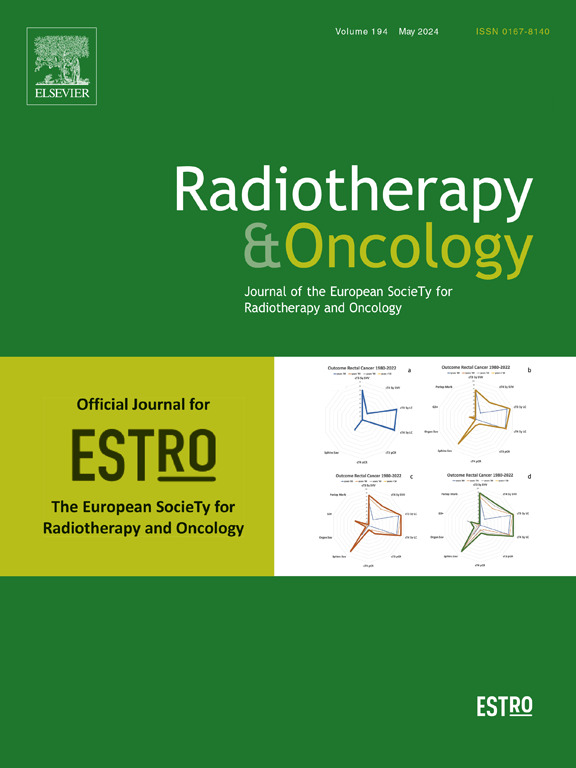Diagnosis and treatment of radiation induced pneumonitis in patients with lung cancer: An ESTRO clinical practice guideline
IF 4.9
1区 医学
Q1 ONCOLOGY
引用次数: 0
Abstract
The incidence of radiation pneumonitis (RP) has decreased significantly compared to historical series, mainly due to improved radiotherapy techniques and patient selection. Nevertheless, some patients still develop RP. This guideline provides user-friendly flowcharts to address common clinical practice questions regarding RP.
We summarize the current state of the art regarding the mechanisms, risk factors, diagnosis and treatment of RP. Dosimetric constraints to minimize the incidence of RP, as well as risk factors for developing RP, such as idiopathic pulmonary fibrosis (IPF) were identified. The combination of radiotherapy and medication as a risk factor for the development of RP was reviewed. RP remains a diagnosis of exclusion, but an algorithm for reaching the diagnosis has been proposed. Finally, practical approaches to the treatment of RP are outlined.
肺癌患者放射性肺炎的诊断和治疗:ESTRO临床实践指南。
与历史系列相比,放射性肺炎(RP)的发病率显著下降,主要是由于放疗技术和患者选择的改进。然而,一些患者仍会出现RP。本指南提供了用户友好的流程图来解决关于RP的常见临床实践问题。我们总结了RP的机制、危险因素、诊断和治疗的最新进展。确定了将RP发病率降到最低的剂量限制,以及发生RP的危险因素,如特发性肺纤维化(IPF)。本文综述了放疗和药物联合治疗作为RP发生的危险因素。RP仍然是一种排除性诊断,但已经提出了一种达到诊断的算法。最后,概述了RP治疗的实用方法。
本文章由计算机程序翻译,如有差异,请以英文原文为准。
求助全文
约1分钟内获得全文
求助全文
来源期刊

Radiotherapy and Oncology
医学-核医学
CiteScore
10.30
自引率
10.50%
发文量
2445
审稿时长
45 days
期刊介绍:
Radiotherapy and Oncology publishes papers describing original research as well as review articles. It covers areas of interest relating to radiation oncology. This includes: clinical radiotherapy, combined modality treatment, translational studies, epidemiological outcomes, imaging, dosimetry, and radiation therapy planning, experimental work in radiobiology, chemobiology, hyperthermia and tumour biology, as well as data science in radiation oncology and physics aspects relevant to oncology.Papers on more general aspects of interest to the radiation oncologist including chemotherapy, surgery and immunology are also published.
 求助内容:
求助内容: 应助结果提醒方式:
应助结果提醒方式:


